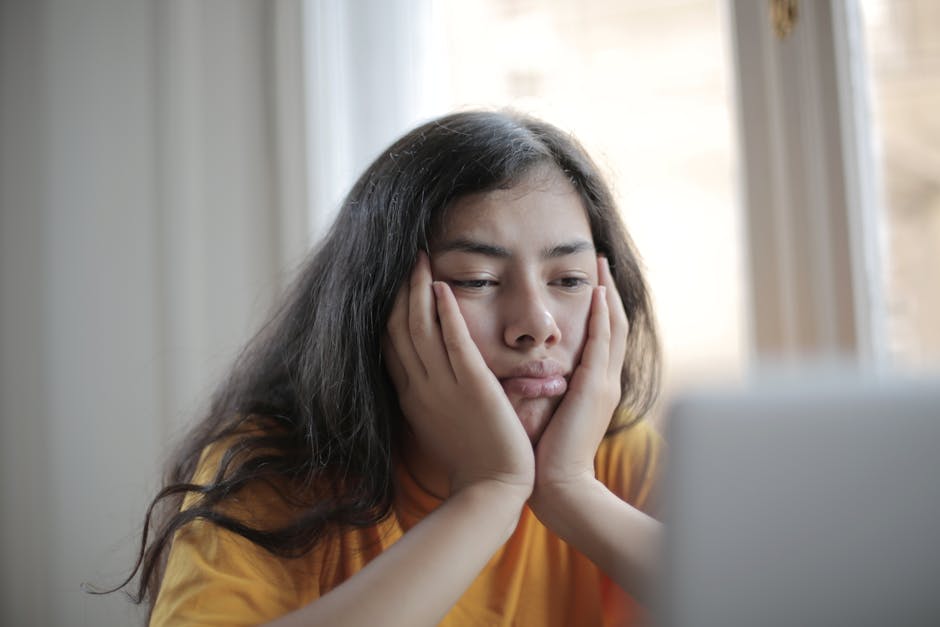In today’s hyper-connected world, our eyes are glued to screens more than ever before. From the moment we wake up to the time we hit the pillow, digital devices are our constant companions. But have you ever considered the toll this takes on your eye health? It’s time to understand why stepping away from your screens is not just a luxury—it’s a necessity for maintaining healthy vision.
Key Takeaways
- Understanding the causes and impacts of eye strain from digital device usage.
- Learning about the “20-20-20” rule and how it can help prevent eye strain.
- Recognizing the unique challenges children face with screen time and eye health.
- Tips for optimizing your digital environment to protect your eyes.
- Additional measures to maintain eye moisture and health.
- The role of computer eyeglasses in preventing eye strain.
- The broader benefits of taking screen breaks for overall well-being.
- Practical advice for integrating screen breaks into your daily routine.
Understanding Eye Strain and Digital Device Usage
Definition of Eye Strain
Eye strain, also known as asthenopia, is a common condition that occurs when your eyes get tired from intense use. This fatigue can be exacerbated by staring at digital screens for prolonged periods.
Causes of Eye Strain Related to Digital Devices
The blue light emitted by screens, the need to focus on pixels, and the tendency to blink less during screen use are all culprits that contribute to digital eye strain. These factors can lead to symptoms such as dry eyes, headaches, blurred vision, and neck pain.
Impact of Prolonged Screen Time on Eye Health
Extended exposure to digital screens can lead to chronic discomfort and may even exacerbate conditions like myopia or presbyopia. It’s crucial to take proactive steps to mitigate these risks.

The “20-20-20” Rule for Preventing Eye Strain
Explanation of the “20-20-20” Rule
The “20-20-20” rule is a simple yet effective way to reduce eye strain. It suggests that for every 20 minutes spent looking at a screen, you should look at something 20 feet away for at least 20 seconds.
Practical Tips for Implementing the Rule
Set a timer, use apps, or integrate this practice into your workflow to make it a habit. This technique helps to refocus your eyes and give them the necessary respite.
Benefits of Regular Breaks for Eye Muscles
Just like any other muscle in your body, your eye muscles need rest to function optimally. Regular breaks can prevent fatigue and maintain your eye health in the long run.

The Special Case of Children and Screen Time
Effects of Online Learning on Children’s Eye Health
With the rise of online learning, children are experiencing increased screen time, which can be particularly harmful to their developing eyes. It’s essential to monitor and manage their exposure.
Strategies for Parents to Manage Screen Time
Parents can set boundaries, encourage outdoor play, and ensure that children take regular breaks from screens to protect their vision. Learn more about screen time moderation.
Importance of Breaks for Children’s Developing Eyes
Frequent breaks are vital for children as their eyes are still growing. Ensuring they rest their eyes can help prevent long-term vision problems.

Optimizing Your Digital Environment for Eye Health
Adjusting Brightness and Contrast
Guidelines for Comfortable Screen Viewing
Adjust the brightness of your screen to match the lighting in your room. Your screen shouldn’t be a light source, but rather blend seamlessly with your environment.
Tools and Settings to Use
Many devices come with settings that automatically adjust brightness based on ambient light. Use these features to your advantage to reduce eye strain.
Reducing Glare on Screens
Positioning Monitors Correctly
Position your screen so that windows are to the side, rather than in front or behind it, to minimize glare and reflections.
Using Anti-Glare Accessories
Consider anti-glare screen protectors or glasses to further reduce the strain on your eyes.
Proper Computer Positioning
Ideal Distance and Angle
Your screen should be about an arm’s length away, with the top of the monitor at or just below eye level.
Ergonomic Considerations
Ensure your chair and desk support a posture that keeps your screen at the correct distance and angle to avoid strain on your eyes and body.

Additional Measures to Protect Your Eyes
Importance of Blinking Often
Role of Blinking in Eye Moisture
Blinking is essential for spreading tears evenly across your eyes, keeping them moist and refreshed.
Exercises to Promote Blinking
Consciously remind yourself to blink, especially when you’re engrossed in screen work. You can also try blinking exercises to keep your eyes lubricated.
Using Artificial Tears
When to Use Eye Drops
If you experience dry eyes despite regular blinking, consider using artificial tears to provide additional moisture.
Selection of the Right Product
Choose preservative-free eye drops if you need to use them frequently, and consult with an eye care professional to find the best option for you.

The Role of Computer Eyeglasses
Benefits of Specialized Eyewear
Computer glasses are designed to reduce glare, increase contrast, and maximize what you see through the lenses—making it easier to look at a screen for longer periods.
How Computer Glasses Work
These glasses have a special coating to block blue light and are often prescribed with a focal length intended for the distance between you and your computer.
When to Consider Computer Eyeglasses
If you spend several hours a day in front of a screen, computer glasses might be worth considering to help alleviate eye strain.
The Broader Importance of Taking Screen Breaks
Preventing Symptoms of Eye Strain
Regular screen breaks can help prevent the onset of eye strain symptoms, keeping your eyes feeling fresh and focused.
Long-Term Eye Health Maintenance
By taking breaks, you’re not just providing immediate relief but also contributing to the long-term health of your eyes.
Enhancing Overall Well-being
Stepping away from screens can also improve your overall well-being, giving you time to stretch, move, and engage in other activities that benefit your body and mind. Discover more about the benefits of taking breaks and stretching through this insightful piece on why it’s important to take breaks and stretch.

Practical Advice for Implementing Screen Breaks
Setting Up Reminders and Alarms
Use technology to your advantage by setting up reminders or alarms to prompt you to take breaks.
Incorporating Breaks into Daily Routines
Build screen breaks into your daily schedule, just like you would with meals or exercise.
Engaging in Alternative Activities
Choose activities that don’t involve screens during your breaks, such as walking, reading a book, or practicing mindfulness.
What Parents Can Do to Help Their Children
Educating Children on the Importance of Breaks
Teach children about the importance of taking breaks to instill healthy habits early on.
Creating a Balanced Screen Time Schedule
Work with your children to create a schedule that balances screen time with other activities. This can help manage their overall exposure to digital devices.
Leading by Example with Healthy Screen Habits
Children learn by example, so it’s crucial for parents to demonstrate healthy screen habits themselves.
Conclusion: Emphasizing the Necessity of Breaks from Digital Devices
Recap of Eye Health Strategies
Taking regular breaks from digital devices is essential for preventing eye strain and maintaining eye health.
Encouragement for Consistent Practice
Incorporate these strategies into your daily life and make them a consistent practice for the best results.
Final Thoughts on Protecting Vision in the Digital Age
As we navigate the digital age, it’s more important than ever to protect our vision. By understanding the risks and implementing the strategies discussed, we can enjoy the benefits of technology without compromising our eye health.
Unplug Your Gaze: The Eye-Opening FAQ on Digital Breaks for Eye Health
Why is it important to take breaks from digital devices for eye health?
Taking breaks from digital devices is crucial for eye health because prolonged screen time can lead to digital eye strain, characterized by symptoms like dry eyes, irritation, blurred vision, and headaches. Regular breaks help to reduce the risk of these symptoms by allowing your eyes to rest and refocus, which can prevent long-term damage and maintain overall eye health.
What is the 20-20-20 rule and how does it help?
The 20-20-20 rule is a simple technique to reduce eye strain during prolonged digital device use. It suggests that for every 20 minutes spent looking at a screen, you should look at something 20 feet away for at least 20 seconds. This practice helps to relax the eye muscles and reduce fatigue by changing the focus of your eyes and allowing them to rest.
Can taking breaks from screens improve sleep quality?
Yes, taking breaks from screens, especially before bedtime, can significantly improve sleep quality. Exposure to blue light emitted by screens can disrupt the natural production of melatonin, the hormone responsible for regulating sleep. Reducing screen time in the evening helps maintain the body’s circadian rhythm, leading to better sleep patterns and overall health.
How often should one take breaks from digital devices?
It’s recommended to take short breaks every 20 to 30 minutes of screen time. These breaks don’t have to be long; even a minute or two of looking away from the screen or standing up and stretching can be beneficial. For longer work periods, a 15-minute break after every 2 hours of continuous screen use is advisable.
Are there specific exercises for the eyes that can be done during breaks?
Yes, there are several eye exercises that can be done during breaks to alleviate strain. These include palming (rubbing your hands together to generate warmth and then gently placing them over your closed eyes), focusing on distant objects to exercise eye muscles, and making circular eye movements. These exercises can help in maintaining eye flexibility and reducing fatigue.
What are the signs of digital eye strain to watch out for?
Signs of digital eye strain include dry or watery eyes, blurred vision, difficulty focusing, increased sensitivity to light, headaches, and neck or shoulder pain. If you experience any of these symptoms frequently, it’s important to assess your screen time and take regular breaks to mitigate the strain on your eyes.
Can the use of screen filters or special glasses help reduce eye strain?
Yes, screen filters that block or reduce blue light exposure can help minimize eye strain. Special glasses designed for computer use, often referred to as computer glasses or blue light blocking glasses, can also reduce glare and filter out blue light, contributing to a more comfortable screen viewing experience.
Should screen brightness and workspace lighting be adjusted to protect eye health?
Absolutely. It’s important to adjust screen brightness to a comfortable level that matches the ambient lighting of your workspace to avoid glare and reduce eye strain. Ideally, the brightness of the screen should not be much brighter or darker than your surroundings. Additionally, ensuring that your workspace is well-lit, with soft, diffused lighting, can help prevent eye strain.
How does screen time affect children’s eye health?
Children’s eyes are still developing and they may be more susceptible to the effects of blue light and digital eye strain. Excessive screen time can impact their vision and may contribute to the development of myopia (nearsightedness). It’s important for children to take regular breaks from screens and engage in outdoor activities to support healthy eye development.
Is it necessary to have an eye examination if experiencing symptoms from prolonged screen use?
If you’re experiencing persistent symptoms of digital eye strain, it’s a good idea to schedule an eye examination. An optometrist can assess your eye health, rule out other vision problems, and provide personalized recommendations for reducing eye strain, which may include prescription glasses, lifestyle changes, or ergonomic adjustments to your workspace.



